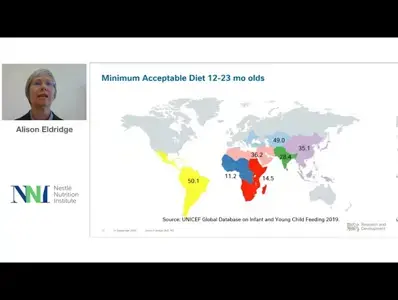NNIW95: Global landscape of nutrient inadequacy in toddlers
Toddlers and young children need an adequate and diverse diet to provide all of the nutrients they require to support optimal growth and development. Unfortunately, inadequate intake of vitamins and minerals is still identified by the World Health Organization (WHO) as a major public health threat for young children. The primary focus for organizations like WHO and the World Bank is iron, vitamin A and iodine for children under 5 years of age in low-income countries. In complement to the data from these organizations, individual-level food consumption surveys are needed to provide a fuller picture of food and nutrient intakes among toddlers. Where studies are available, intakes of dietary fiber and vitamin D are generally below recommendations for toddlers and young children. Other nutrient gaps differ by country and are related to food availability and local dietary habits. For example, toddlers in the US regularly consume dairy products and few (8.1%) fall below recommendations for calcium intakes compared to those living in the Philippines who rarely consume dairy foods (66% below recommendations). Dietary intake studies help to identify the foods and beverages most relevant to alleviate nutrient gaps and improve dietary intakes of toddlers and young children around the world.
If you liked this post you may also like

